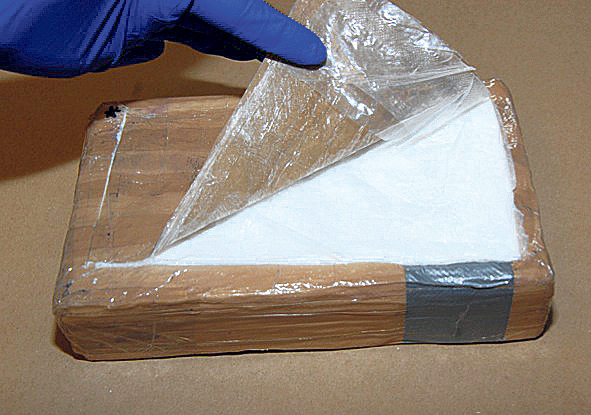
The man described by a judge as the “guiding mind and lead player” in the drug operation that led to the largest cocaine bust in the city’s history has had his sentence reduced by two years.
Trevor McKay was originally sentenced to nine years in prison last September. He appealed the sentence. That appeal was heard on June 6.
The three justices that heard his appeal agreed unanimously that the sentencing judge erred in his reasoning.
They concurred that a sentence of seven years was more appropriate.
McKay’s charges date back to a 2016 cocaine bust that saw 11.25 kg of the drug discovered in a Prince Albert apartment. The cocaine was worth an estimated $1.5 million on the streets. Much of it was relatively (over 80 per cent) pure and was destined to be cut with other drugs found in the apartment — phenacetin and novocaine — before being sold on the street to bump up its value.
The drugs were discovered when the apartment’s landlord entered the unit for a routine smoke detector check. There were no signs anyone lived in the apartment, as it was devoid of furniture. There were also no signs of any drug use on-site. Rather, it appeared the Prince Albert apartment was used to store, cut and distribute cocaine across Northern Saskatchewan.
McKay pleaded guilty to possession of a controlled substance for the purpose of trafficking, possession of property obtained by crime and money laundering. He reportedly laundered his drug money through the purchase of luxury cars.
Drugs and cutting agents were brought into and out of the unit through the use of drywall mud containers.
During the original sentencing arguments, the Crown had asked for a sentence of 12 years “to reflect the sophistication and scale of the trafficking operation, the quantity and nature of the drugs involved, and Mr. McKay’s involvement in that operation, together with this continued involvement in trafficking in drugs after the police closed down his stash house in Prince Albert.”
The defence asked for seven years, arguing that the Crown overestimated McKay’s roe and had “not given sufficient consideration to Mr. McKay’s personal circumstances in recommending an appropriate sentence to this court.”
During the original sentencing, Judge Schiefner wrote that he was satisfied beyond any doubt that the operation was “both highly sophisticated and intended for the commercial distribution of large volumes of cocaine in Northern Saskatchewan… Simply put, the operation was designed to be hidden in plain sight. It was covertly located in an ordinary apartment with a rational cover story for the movement of product in and out of the building — namely, the outward appearance of a drywall operation.”
Schiefner concluded that an appropriate sentence for McKay, who he determined was the mastermind of the operation, was nine years.
Co-accused Kelsey Bear, McKay’s common-law partner, received a seven-year sentence through a joint submission by the Crown and defence.
But the Court of Appeal found that there was not sufficient reasoning to warrant McKay’s nine-year sentence.
The justices wrote that Scheifner made a mistake when he used Bear’s seven-year sentence as a starting point without independently determining what a fit sentence for McKay would look like.
“There is no principle of law that says that the co-accused’s sentence is a starting point for the sentences for the ring-leaders of the particular criminal endeavour,” Madame Justice Jackson wrote in the unanimous decision.
“A sentence should be similar to sentences imposed on similar offenders for similar offences committed in similar circumstances”.
While the extra two years from McKay could be argued by saying that he was the ring-leader, Jackson wrote that because Bear’s sentence came from a joint submission, it wasn’t judged on its appropriateness. That means, she wrote, that McKay’s sentence also can’t be assumed to be fair because it’s based on a sentence that wasn’t tested on its fairness.
Joint sentences, rather, are judged as to whether they would bring the administration of law into disrepute. They’re rarely overturned. They’re not put through the same scrutiny as sentences that don’t come from joint submissions go through.
“A sentence of nine years is the longest reported sentence dealing with trafficking of cocaine that did not involve some form of importation of the drug, firearms or some other aggravating feature,” Jackson wrote.
“That, of course, is not the error that I have focussed on; rather, it supports my conclusion that the error in principle previously identified – using a joint submission sentence as a starting point – did indeed occur and that it had an impact on the sentence.”
She sentenced McKay instead to seven years behind bars.

